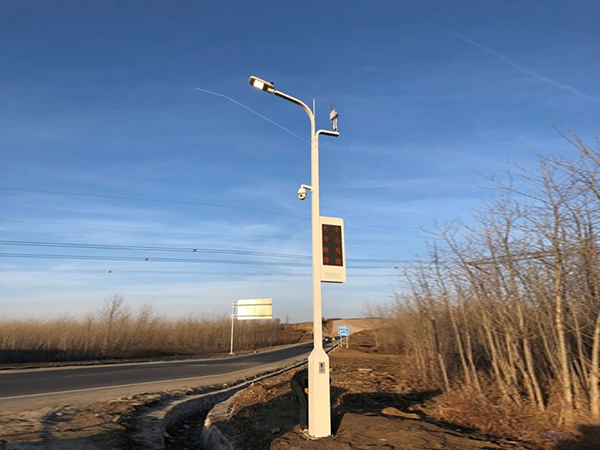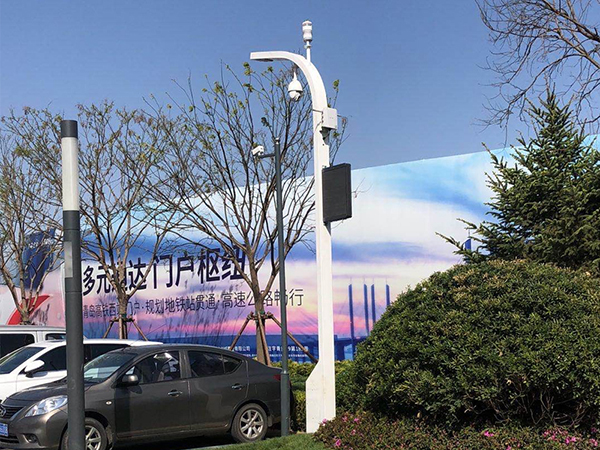With the development of society and the improvement of living standards, people’s demand for urban lighting is constantly changing and upgrading. The simple lighting function can not meet the needs of modern cities in many scenarios. The smart street lamp is born to cope with the current situation of urban lighting.
Smart light pole is the result of the big concept of smart city. Unlike traditional street lamps, smart street lamps are also called “smart city multi-functional integrated street lamps”. They are a new information infrastructure based on smart lighting, integrating cameras, advertising screens, video monitoring, positioning alarm, new energy vehicle charging, 5g micro base stations, real-time urban environment monitoring and other functions.
From “lighting 1.0″ to “smart lighting 2.0″
Relevant data show that the electricity consumption of lighting in China is 12%, and the road lighting accounts for 30% of them. It has become a major power consumer in cities. It is urgent to upgrade the traditional lighting to solve the social problems such as power shortage, light pollution and high energy consumption.
The smart street lamp can solve the problem of high energy consumption of traditional street lamps, and the energy saving efficiency is increased by nearly 90%. It can intelligently adjust the lighting brightness in time to save energy. It can also automatically report the abnormal and fault conditions of the facilities to the management personnel to reduce the inspection and maintenance costs.
From “auxiliary transportation” to “intelligent transportation”
As the carrier of road lighting, traditional street lamps play the role of “assisting traffic”. However, in view of the characteristics of street lamps, which have many points and are close to road vehicles, we can consider using street lamps to collect and manage road and vehicle information and realize the function of “intelligent traffic”. Specifically, for example:
It can collect and transmit traffic status information (traffic flow, congestion degree) and road operation conditions (whether there is water accumulation, whether there is fault, etc.) through the detector in real time, and carry out traffic control and road condition statistics;
A high-level camera can be mounted as an electronic police to identify various illegal behaviors such as speeding and illegal parking. In addition, intelligent parking scenes can also be built in combination with license plate recognition.
“Street lamp” + “communication”
As the most widely distributed and dense municipal facilities (the distance between street lamps is generally not more than 3 times of the height of street lamps, about 20-30 meters), street lamps have the natural advantages as communication connection points. It can be considered to use street lamps as carriers to establish information infrastructure. Specifically, it can be extended to the outside through wireless or wired ways to provide a variety of functional services, including wireless base station, IOT lot, edge computing, public WiFi, optical transmission, etc.
Among them, when it comes to wireless base stations, we have to mention 5g. Compared with 4G, 5g has higher frequency, more vacuum loss, shorter transmission distance and weaker penetration ability. The number of blind spots to be added is much higher than 4G. Therefore, 5g networking needs macro station wide coverage and small station capacity expansion and blinding in hot spots, while the density, mounting height, accurate coordinates, complete power supply and other characteristics of street lamps perfectly meet the networking needs of 5g micro stations.
“Street lamp” + “power supply and standby”
There is no doubt that the street lamps themselves can transmit power, so it is easy to think that the street lamps can be equipped with additional power supply and standby functions, including charging piles, USB interface charging, signal lamps, etc. in addition, solar panels or wind power generation equipment can be considered to realize urban green energy.
“Street lamp” + “safety and environmental protection”
As mentioned above, street lamps are widely distributed. In addition, their distribution areas also have characteristics. Most of them are located in densely populated places such as roads, streets and parks. Therefore, if cameras, emergency help buttons, meteorological environment monitoring points, etc. are deployed on the pole, the risk factors threatening public security can be effectively identified through remote systems or cloud platforms to realize one key alarm, and provide real-time collected environmental big data to the environmental protection department as a key link in the comprehensive environmental services.
Nowadays, as the entry point of smart cities, smart light poles have been built in more and more cities. The arrival of the 5g era has made smart street lamps even more powerful. In the future, smart streetlights will continue to expand the more scene oriented and intelligent application mode to provide people with more detailed and efficient public services.
Post time: Aug-12-2022






